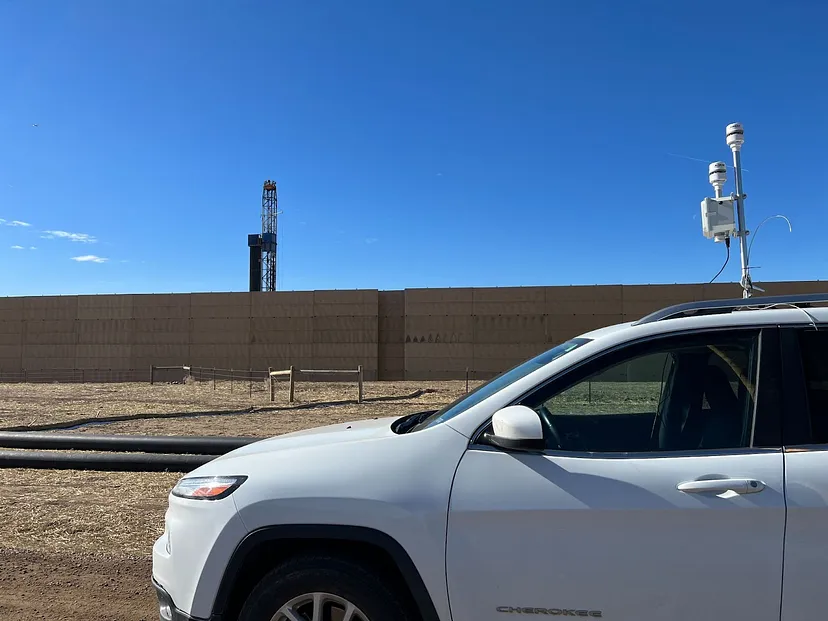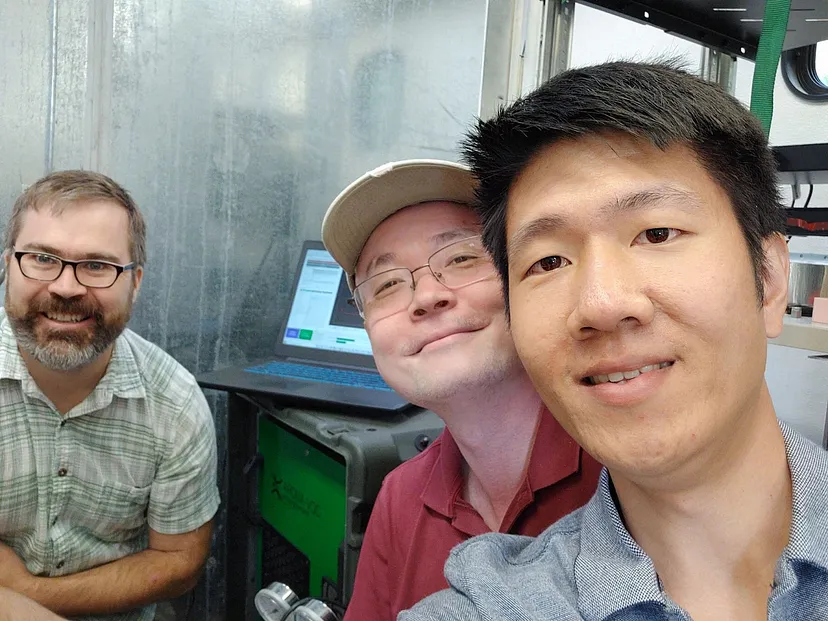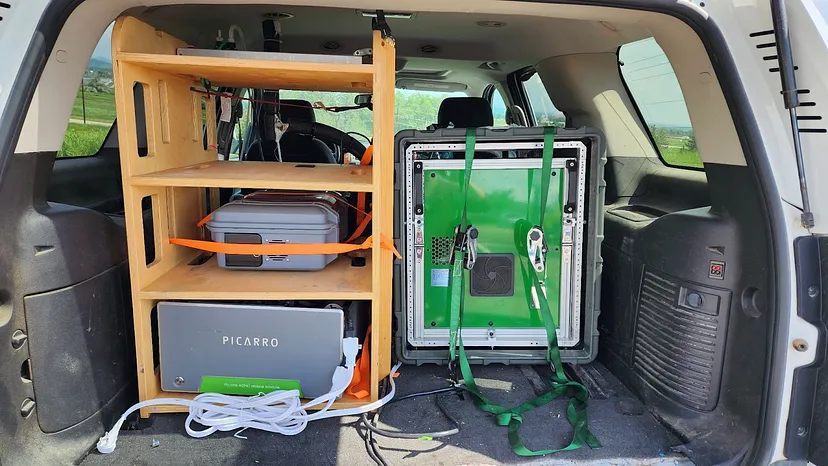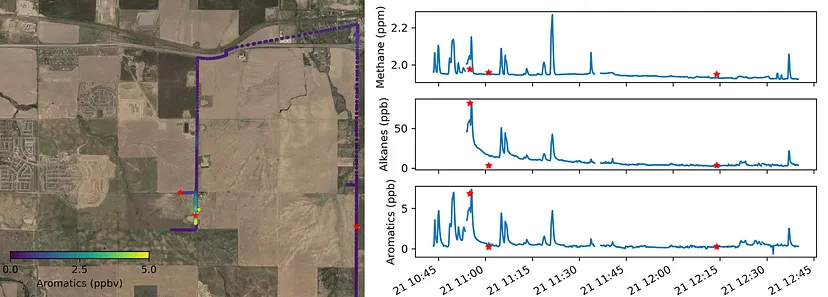
A mobile lab, equipped with AROMA and other high-tech sensors, monitors emissions from oil and gas development in Colorado.
A Decade of Developing Sensors to Characterize Air Pollutants
News
27th Feb 2024
Q&A with Da Pan, PhD, Colorado State University
Growing up on the southeastern coast of China, Da Pan did not see severe air pollution until he was an undergraduate student in Beijing at Peking University. At the time, the air quality in Beijing was poor and inspired Pan to pursue atmospheric science.
Pan would go on to attend graduate school work in the United States at Princeton University. Working in an environmental engineering lab developing sensors for better measuring air pollution, he would return to China to study the air quality there. Now a research scientist in the Collett lab at Colorado State University, Pan is pioneering the use of multiple mobile sensors in characterizing the emissions from unconventional oil and gas development in Colorado. Part of a project with the Health Effects Institute, his team has several high-tech tools on their side, including AROMA-VOC.

We spoke with Pan about his early work in mobile monitoring in China, his work with AROMA in Colorado now, and what he sees as the future of air quality sensors.
ET: Tell us a bit about your early mobile montining work that took you back to China.
Pan: After I joined the environmental engineering group at Princeton, one of the things I did was bring our air quality sensor to China to measure methane emissions from natural gas vehicles. It was 2014, and we saw these huge plumes on the streets, and we didn’t know where they were coming from; the emissions were 16 times higher for passenger vehicles than what we saw in the US and Europe. The buses there said they were using “green energy” with natural gas. We measured methane there of about 10 ppm, against a background level around 2 ppm. That’s how I got started with mobile measurements.
It’s important because methane is a really potent greenhouse gas. So, switching from conventional vehicles to natural gas without controlling methane emissions is actually pretty bad for the climate.
ET: But doesn’t natural gas emit less carbon dioxide, which is a good thing?
Pan: It’s complicated because it comes down to whether you can prevent methane leaking from natural gas. Natural gas does emit about 10 to 20% less CO₂, which is good. And it emits lower SO₂ and NOx, which are precursors for PM2.5 and ozone. So in that sense, if everything goes perfectly and you can control methane leakage and remove methane from the exhaust, then it is better for the climate and for air quality; that is why in China, the central government was pushing for wider adoption of natural gas.
What we found was that because of a certain type of engine they were using in China that was better for fuel economy, the exhaust control system was not working as it should. Lots of methane was not being removed from the exhaust, with around 2% leakage. There are technologies that solve this, and in our paper [published in Nature Communications], we made some recommendations, including for new emissions standards. If there were a strictly implemented new emission standard, it would save emissions equivalent to about 12 million gasoline vehicles from China. So, that’s a huge amount of greenhouse gas that we can reduce just by implementing a strict emission standard.
The project with the Health Effects Institute-Energy is jointly funded by EPA, local agencies, and also industrial partners, to figure out what process is actually contributing to the air toxics from different drilling operations, looking at the full lifecycle of a well pad. … Currently, there is no such knowledge on what’s being emitted and by what processes.
ET: Now you are working to understand emissions from oil and gas development in Colorado… Why is that important?
Pan: Now that the US is doing unconventional oil and gas development, the technology is different and comes with different risks for emissions. It can take longer to drill and is in new locations, often in residential, community spaces. People are concerned about air toxics emitted from well pads. And the oil and gas operators are also concerned, as they want to be able to continue to drill while complying with current and expected regulations. The project with the Health Effects Institute-Energy is jointly funded by EPA, local agencies, and also industrial partners, to figure out what process is actually contributing to the air toxics from different drilling operations, looking at the full lifecycle of a well pad. This will allow local agencies and the operators to use best practices to limit toxic emissions. Currently, there is no such knowledge on what’s being emitted and by what processes.
The first phase is to measure the emissions. The next stage for this project is to develop a model for the emissions that government agencies and operators can use to basically estimate how much they are emitting. Eventually, this information will be made publicly available.

ET: What kinds of sensors are you using for this work?
Pan: We have a mobile lab (pictured above), which is a SUV outfitted with: GPS, to know where the plume is coming from; a sonic anemometer, to measure wind; an photoionization detector (PID); and AROMA. The PID is sensitive to multiple species but does not give out speciated results, only total VOC amounts. It cannot give you a benzene concentration, for example, so it’s very different from AROMA-VOC. So we use the PID to see where the plume is and AROMA to give us the detailed aromatics data. We also have a LI-COR sensor for measuring CO2 and methane, and we have canisters that we use to collect air samples when plumes are detected, which we then analyze back in our lab with gas chromatography. We use multiple sensors to take advantage of their unique characteristics.
ET: How do the AROMA results compare to the in-lab analysis you do from the canisters?

Pan: We’ve done several comparisons, and so far, it looks like AROMA is doing a pretty good job. For example (see figure above), we looked at emissions from a well pad that’s been drilled and we wanted to see the resulting emissions. We drove around and could see the plume via the PID, then we stopped and collected the air for analysis in canisters, while AROMA was measuring. We looked at methane, alkanes, and aromatics. In the graph above, the red stars are what we see from the canister, which matched what we see from AROMA.
People will come up to us and ask what we’re doing, because the mobile lab looks like something out of “Ghostbusters,” or they think it’s a Google street car.
ET: How have the local communities in Colorado been responding to this work and your mobile lab?
Pan: People will come up to us and ask what we’re doing, because the mobile lab looks like something out of “Ghostbusters,” or they think it’s a Google street car. We tell them we were here to monitor a well pad, and then they will often wonder if there’s bad stuff being emitted because sometimes they smell something. But one thing that people often don’t realize is sometimes when you smell something, it doesn’t mean it’s bad for your house. But sometimes when you don’t smell something, there could be invisible toxics present, like benzene. So we try to explain that we are using fancy sensors to measure what’s really happening and try to prevent anything bad from being emitted in the future. We get mixed feedback, as some people are more supportive of development in the area than others. We also share some concerns we receive with local agencies.
ET: Now that you have been working on air quality sensors for about a decade, what trends have you seen in the field?
Pan: Increasingly, scientists and industries are transitioning from laboratory-based technology to more portable instruments. For example, before AROMA, we would use GC [gas chromatographs], but those are pretty heavy and require a trailer that can be hard to maintain and operate in the field. Also, the power consumption is probably 100 times higher than AROMA. So, we and others are moving toward field-based sensors that are more portable and can be powered by battery easily.
The other trend is toward optical-based sensors, which relates to power consumption and portability, but is also much less expensive. Things are definitely improving quite a lot compared to 10 years ago.
ET: What do you see as the future in this technology space?
Pan: I’m really interested in combining mobile sensors with UAVs. Right now, we have to check weather conditions before measuring a plume and the plume needs to be low to the ground to see it, as we can only see 2 meters above ground. But if we can put a sensor on a UAV, we could then sense what’s in the air and potentially follow the plume. It might be possible to put up a reflector that will direct the laser beam from lasers similar to the ones in the AROMA to be able to measure the column concentrations of VOCs. That’s something I think would be really exciting in the future. Even though we are in the early phases with drone technology, I think there are a lot of possibilities.
For more information, please contact us.